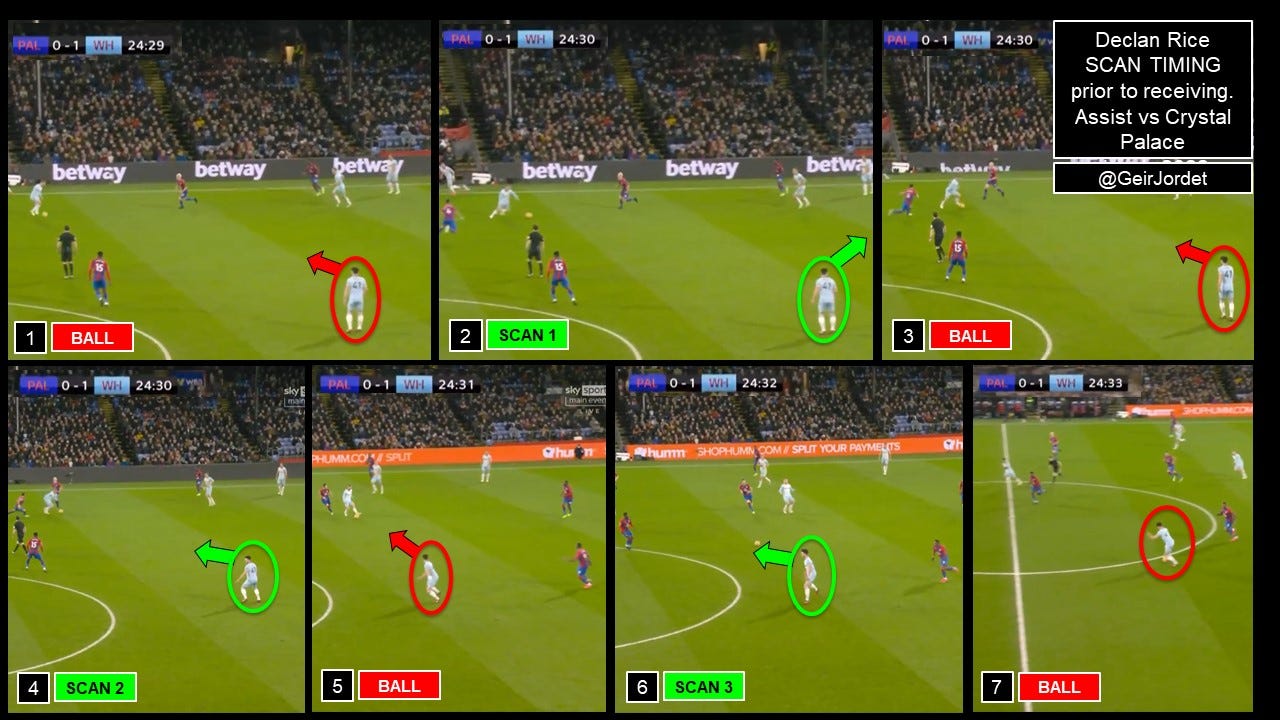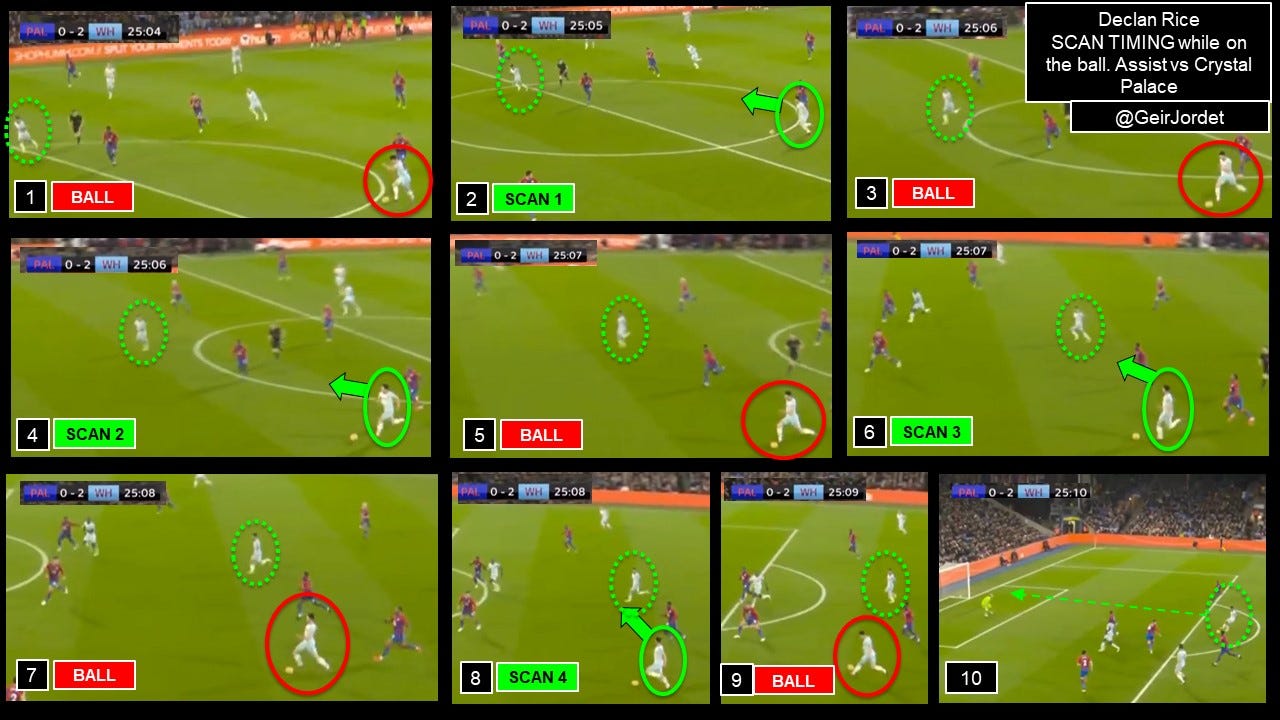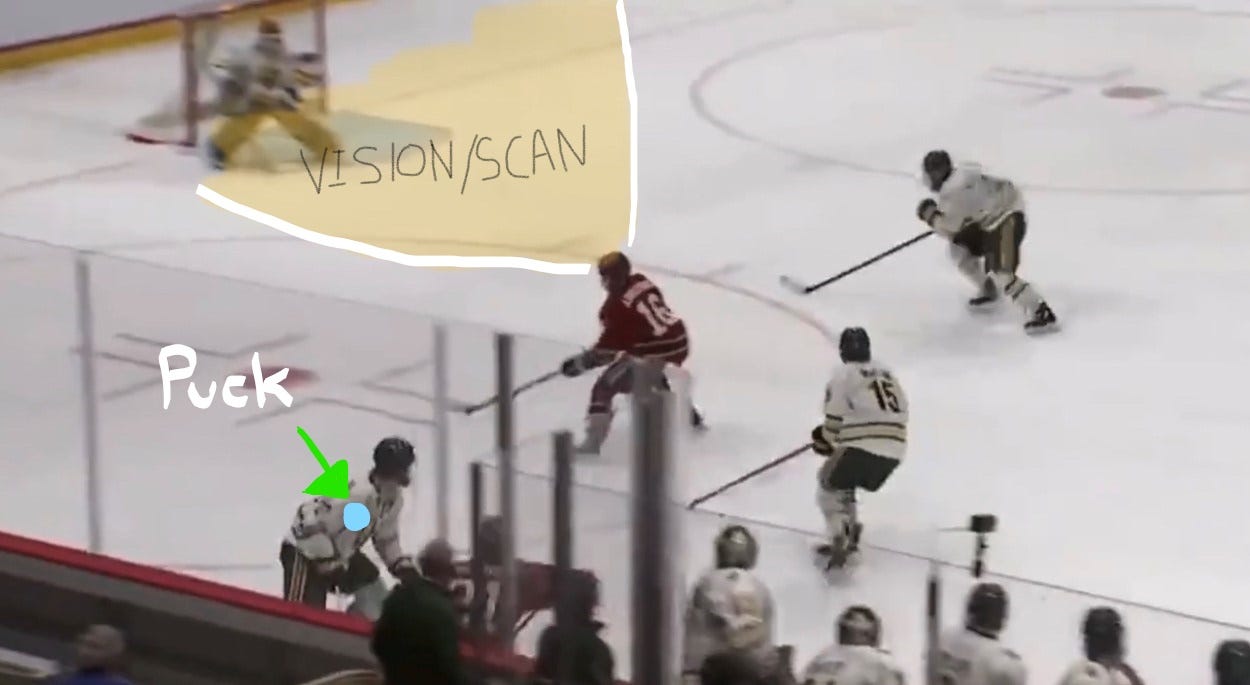We’ve talked about the importance of ice awareness being a foundational piece for slowing the perception of playing speed.
It’s an important topic, so we’re releasing a three-part series on the concept of scanning. Next up, advanced scanning.
Advanced Scanning
Advanced Scanning
Unsurprisingly, as players get older and move up the playing pyramid, there is an increase in scanning by the players. Young players seem to get better at scanning as they grow — or maybe those who don’t do it well enough simply fall behind.
Soccer coach Karl Marius Aksum and his team found that U19 players performed more scans than U17 players. A positive relationship between scan frequency and pass success was also found.
Another finding was that opponent pressure and pitch/field position were both critical contextual factors that may influence scanning behavior.
Another student project under Geir Jordet found that premier league defenders adopted a more open body orientation and scanned more frequently than reserve league/academy defenders.
"We found that Premier League players were significantly better at this than Dutch amateur players, as you might expect.
But we also found that the very best Premier League players were better at this than other Premier League players."
Body Orientation
Aksum's research found that players who scanned closer to the moment of ball reception had a more forward-oriented body orientation when they received the ball from a pass.
This allows players to be in a better spot to attack and can best successfully “play fast.”
Scanning behavior is affected by greater opponent pressure and aggressive positioning. Opponent pressure had a large effect on pass results and the player's body orientation.
Aksum also found that scanning frequency was also correlated to a player's appearances in national teams. The results showed a positive relation between scanning frequency and successful passes, as well as changes in body orientation.
Timing of Scans
We’ve established that better players scan more. Yet, they just don’t scan more… they also scan better by scanning at opportune times. Scan timing is critical to detect important events while keeping track of surroundings.
When to scan:
When a teammate is between touches. While the predictable happens, players are looking for other information.
When to look at the puck/puck carrier:
When a teammate is dribbling. Things are happening and can change quickly.
Scan Timing
What seems a simple assist is often preceded by complex visual perception.
Declan Rice’s sequence that led to a great assist originated from perfectly timed scans. When his teammate touches the ball, Rice looks at the ball. Between every touch, Rice scans.
Rice repeats this procedure while on the ball. Every time he touches the ball, he looks at it. Between touches, he scans.
Maple Leafs Prospect Nick Abruzzese
We looked at scanning timing with Nick Abruzzese’s detailed play. He possesses elite hockey IQ and unsurprisingly has elite scanning habits as well. We can see in the picture below how Abruzzese is looking away while the puck is on its way to him.
He leverages his scanning to create real-time situational awareness, turning it into a smooth spinning backhand pass for an assist.
Remember that great players take in more information than others by scanning 6-8 times in the 10 seconds before receiving the ball (compared to 4-6 scans of good players).
At what age and how to develop this scanning habit? Check it out here, Scanning Training.
Scanning Series:
Did you enjoy this newsletter?
Help us spread the ideas within and share it with the people you care about







